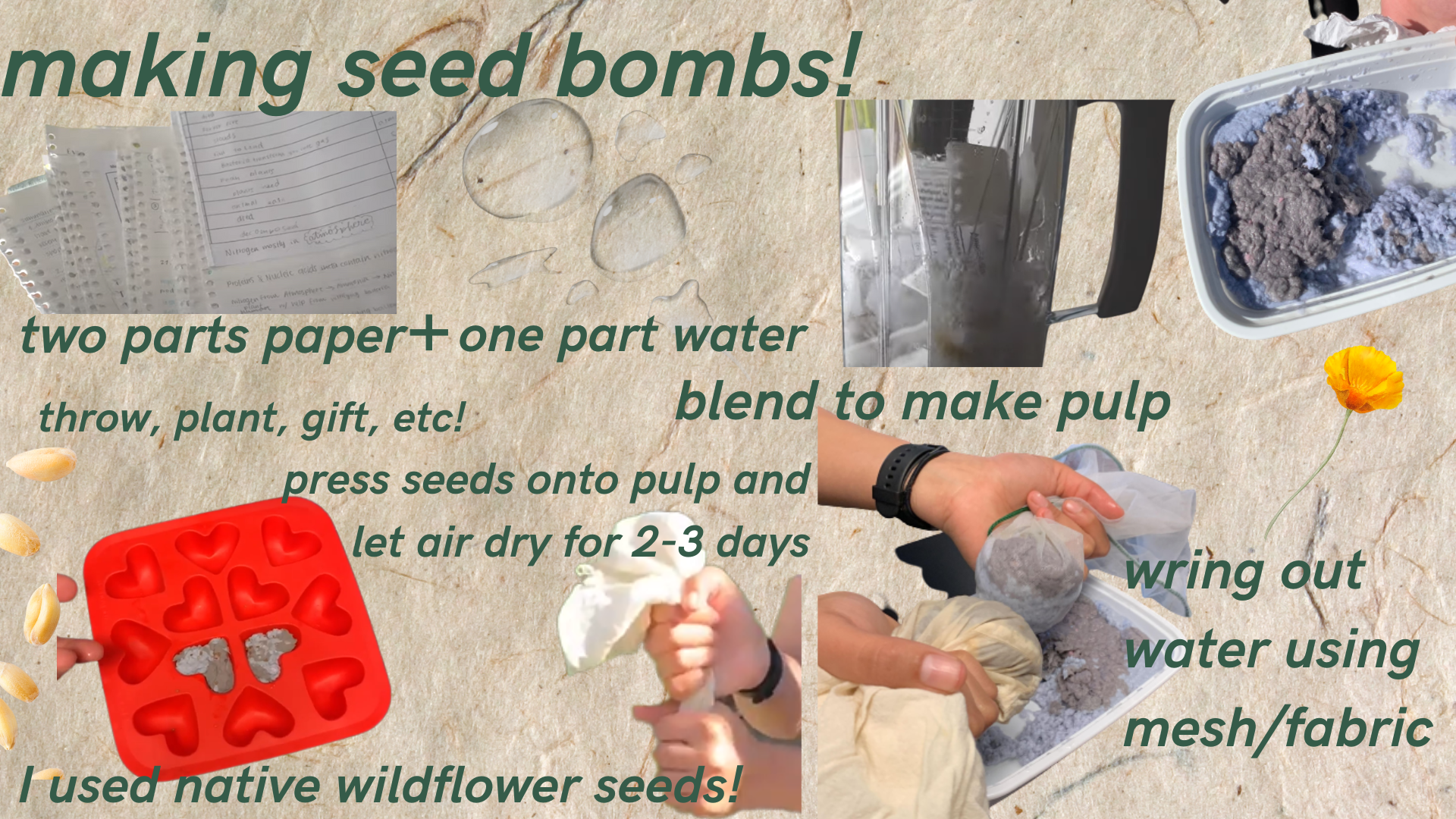How we treat our land dictates everything–from the air we breathe to the nutrients in our food. With the rise of mechanized agriculture, concrete jungles, and cookie-cutter suburbs, maintaining the natural balance of our soil seems virtually impossible, unless everyone had the ability to create greenery in their landscape.
Seed balls, bombs, and green grenades serve that exact purpose, built on the idea of accessibility. Anyone can seed bomb to restore green spaces in their community that seem inaccessible. Using a natural carrier such as compost or clay, a group of seeds are tossed and equipped to germinate and proliferate, with a little help from a technique called “companion planting”.
Combinations of compatible seeds, like a California wildflower mix
Old homework destined for the trash can become a seed paper starter in a 2-1 ratio of scrap paper to water-blended pulp with the seeds of your choice mixed in, shaped, and dried in natural sunlight over two to three days to form a versatile seed paper.
I recommend this method to all students since the starter is taken care for as a byproduct of high school and it’s the most effective in my experience.
Farmer-philosopher Masanobu Fukuoka is credited with revitalizing ancient farming practices like “tsuchi-dango,” or seed balls, to naturally farm. To make “tsuchi-dango,” nestle tree and vegetable seeds in a layer of moist clay and compost, then shape using water until the ball will not crumble when thrown. The seeds are a self-sustaining and cost-effective regenerative process that are best yielded on barren land and slopes during the rainy season.
When I tried these varieties outside my house during a week of rain, the soil dissipated and the seeds were left germinate on their own, grabbing onto nearby tanbark before ultimately washing away after a night of rain. This method is most effective with soil and rainy conditions, but not as versatile as the seed paper. Typically, though, it takes about three weeks for a seed to germinate and grow past the compost and clay and into the ground.
Seed balls come in all forms, so once you have a pulp (water, paper, or soil) and a method of enclosing the seeds in the ball, the possibilities are endless. For example, in 1960’s New York, a makeshift form of the “tsuchi-dango” was employed to reclaim derelict lots. Condoms filled with native plant seeds, fertilizer, and water sprouted over 1,000 community gardens and mobilized countless guerilla gardeners. All it took was a solid base and some seeds!
Whether it be your old homework or silt and clay, the versatility of the seed bomb makes it a simple opportunity for effective altruism. A rewarding process with a radical history, seed bombs represent reform and regeneration, a guerilla war for the right to create a positive impact on our planet, and respect for our intricate ecosystems, all rolled into a ball.

